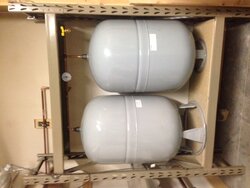The Bladder tanks I am adding to my system have a warning label to use dielectric fittings when connecting dissimilar metals.
I am connecting to them with copper, What do you think Dielectric union needed or no?
gg
I am connecting to them with copper, What do you think Dielectric union needed or no?
gg


